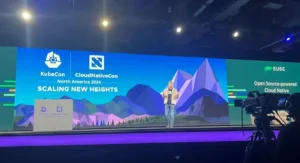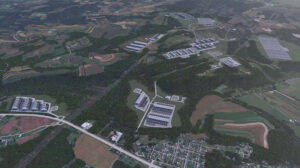Five years after it was accepted into the CNCF Sandbox project, KubeEdge becomes a graduated project at CNCF.

The Cloud Native Computing Foundation has another project that’s hanging its diploma on the wall. It’s taken a while, but this morning it was announced that KubeEdge, CNCF’s Kubernetes-based framework for bringing containers to the edge, has graduated.
The platform is designed to bring full featured kubernetes to edge locations where there might be issues that are common to the edge, such as limited compute resources and network instability. Initially developed by Huawei Cloud, which open sourced it under the Apache 2.0 license in 2018, it became the first cloud native edge project to be accepted into the CNCF Sandbox project in 2019. It was promoted to incubating project status about a year later, in September 2020.
CNCF says that since falling under its wings the project’s team has grown to include maintainers from 15 organizations. It currently has more than 1,600 contributors who come from more than 35 countries. In addition to Huawei Cloud, contributing organizations (there are 110 in all) include HarmonyCloud, Inovex, Arm, Inspur, Sony, DaoCloud and others.
“KubeEdge started with a vision to extend cloud native technology to the edge and foster a robust edge-cloud computing ecosystem,” KubeEdge technical steering committee members Kevin Wang and Yin Ding said in a joint statement. “Today, it has been adopted across numerous innovative and unforeseen fields. This achievement is a testament to the incredible creativity and dedication of our contributors, whose efforts have driven the project’s success. Graduation marks a new beginning, and we are excited to explore even greater possibilities for the entire cloud native ecosystem.”
These days the KubeEdge framework is being deployed by numerous industries that include content delivery networks, intelligent transportation, smart energy (as well as smart retail, smart parks, and “smart” everything else), automobiles, intelligent logistics, finance, power, and blockchain. It’s also breaking new ground by being used in industry-leading projects such as the world’s largest cloud native cloud-edge collaborative highway toll station management project, the first cloud native satellite-ground collaborative satellite, the first cloud native electric vehicle, and more.
“Kubernetes was born through usage across massive data centers but has evolved, just like Linux, for new environments and has become a leading platform in edge computing,” said Chris Aniszczyk, CNCF’s chief technical officer. “KubeEdge has been at the forefront of this transformation, bringing Kubernetes into new frontiers from electric cars to outer space. We look forward to seeing where the KubeEdge project goes next as a graduate project.”
As a graduated project of the Linux Foundation’s CNCF, project leaders say that the KubeEdge community will continue with the open governance model as well as the collaborative concept, and will work to further improve the platform’s user experience and to provide an even more reliable and stable experience for users.
In addition, KubeEdge will continue to explore new areas, such as cloud edge collaborative AI, cloud edge collaborative robots, and edge cluster management.
“KubeEdge officially reaching the next level of maturity at CNCF is a strong recognition of the successful development efforts around this technology,” Dirk Pleiter, chairperson of the Open Edge and HPC Initiative said in a statement. “OEHI strongly believes in the potential of KubeEdge as a key element of upcoming compute continuum infrastructures. To train people for this new paradigm of computing infrastructure design, OEHI co-organized a tutorial at ISC HPC 2024 where participants could get first-hand experience with KubeEdge. In the future, we will continue to promote this technology.”
Christine Hall has been a journalist since 1971. In 2001, she began writing a weekly consumer computer column and started covering Linux and FOSS in 2002 after making the switch to GNU/Linux. Follow her on Twitter: @BrideOfLinux






